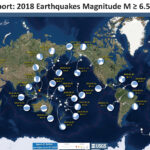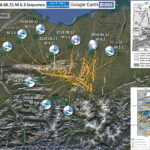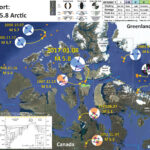Here I summarize Earth’s significant seismicity for 2018. I limit this summary to earthquakes with magnitude greater than or equal to M 6.5. I am sure that there is a possibility that your favorite earthquake is not included in this…
Earthquake Report: Alaska Update
Thanks to Jamie Gurney, I took a looksie at the Kaktovik earthquake sequence again. He had interpreted this sequence to possibly represent an extensional step over in a right-lateral (dextral) strike-slip tectonic fault system. I do not include much background…
Earthquake Report: Arctic!
Well, I put this and my next earthquake report together shortly after these earthquakes happened, but I was otherwise busy before I could present them online. There was an earthquake in the Arctic on 2017.01.08, along the channel of one…



